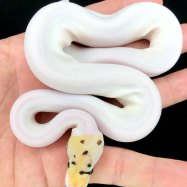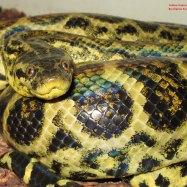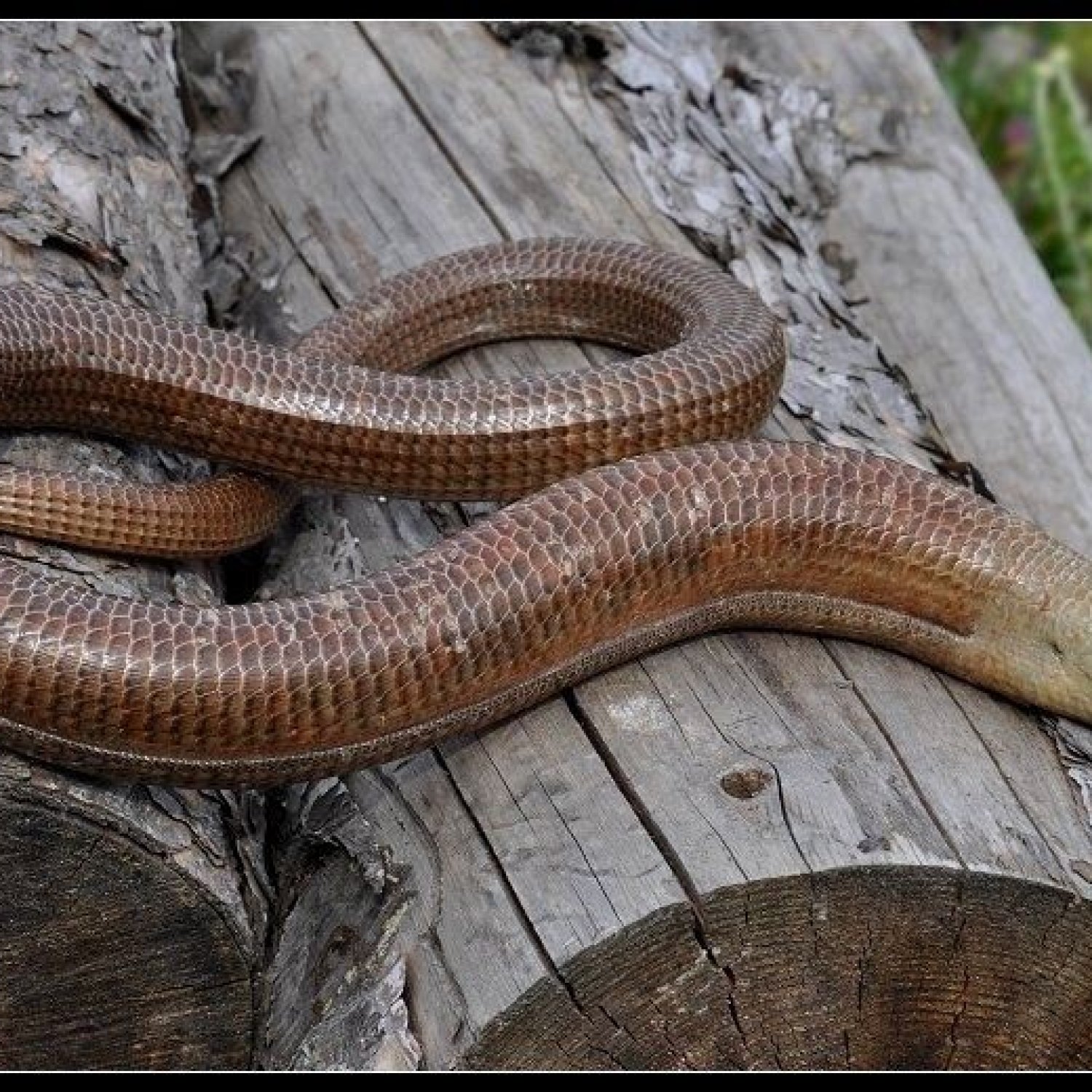
Glass Lizard
Up to 4.5 feet
The Glass Lizard, also known as the Glass Snake, is a fascinating creature found in various habitats. It belongs to the Anguidae family and can reach lengths of up to 4.5 feet. Its slender and snake-like body shape allows it to easily move through the grass and avoid predators. Keep an eye out for this unique animal on your next outdoor adventure!
Animal Details Summary:
Common Name: Glass Lizard
Kingdom: Animalia
Habitat: Grasslands, meadows, forests
The Unique and Mysterious Glass Lizard – A Close Look at the Slender and Snake-Like Reptile
For many nature enthusiasts and wildlife lovers, lizards are considered fascinating creatures. With their colorful scales and ability to blend into their surroundings, they attract a lot of attention. However, there is one species of lizard that stands out from the rest – the Glass Lizard.Scientifically known as Ophisaurus, the Glass Lizard is also commonly referred to as the Glass Snake due to its remarkably snake-like appearance Glass Lizard. Many people are surprised to learn that this creature is actually a lizard and not a snake, despite its physical resemblance. In this article, we will delve into the details of this unique and mysterious reptile, exploring its characteristics, habitat, and distribution.
A Part of the Reptile Family
Before we delve into the specifics of the Glass Lizard, let's first understand its classification. As part of the animal kingdom, the Glass Lizard belongs to the phylum Chordata, which includes all animals with a spinal cord. It falls under the class Reptilia, which includes all reptiles, such as snakes, lizards, and turtles.Within the order Squamata, the Glass Lizard is classified under the family Anguidae, which includes other legless lizards. This family is known for having elongated bodies, reduced limbs, and smooth scales, making them closely resemble snakes. The Glass Lizard is a perfect example of this physical similarity, as it even moves like a snake, making it difficult for many to differentiate between the two.
A Habitat of Wide Open Spaces
As their common name suggests, Glass Lizards are mainly found in open grasslands, meadows, and forests Grey Seal. They prefer areas with loose soil, as they are burrowing reptiles and require soft ground to dig and hide. In the wild, they can be found in Europe, Asia, and Africa, primarily in countries such as Germany, France, Italy, and Switzerland.Within its range, the Glass Lizard can be found in various habitats, including open fields, woodland edges, and even gardens. They are adaptable creatures that can thrive in a variety of environments, as long as there is plenty of cover and loose soil for them to dig and hide in.
An Unconventional Feeding Method
Unlike most lizards, the Glass Lizard is a carnivorous reptile, meaning it preys on other animals for survival. It feeds on a wide variety of prey, including insects, snails, slugs, small reptiles, and mammals. The Glass Lizard has a keen sense of smell, which it uses to track down its prey and locate burrows for shelter.One of the most interesting aspects of the Glass Lizard’s feeding method is its ability to swallow its prey whole. This is a unique feature for a lizard and is typically found in snakes. The Glass Lizard has a long and flexible body, allowing it to swallow prey much larger than its head. This is an advantage for this species, as it allows them to consume larger prey and preserve energy by not having to hunt as frequently.
The Mysterious Distribution of the Glass Lizard
The Glass Lizard's distribution is quite intriguing, as they are not native to one specific region but can be found across three different continents – Europe, Asia, and Africa. However, the reason for this wide distribution is still a mystery. One theory suggests that during the ice age, these reptiles were able to move and expand their range due to the low sea levels.Country of origin also varies, with different subspecies originating from different regions. The O. a. apodus species is found in western Europe, while the O. a. longicaudus is found in northern Africa. The O. a. punctatus, on the other hand, is native to the Middle East. These subspecies are characterized by slight physical differences, such as coloration and patterns, but overall, they share similar characteristics.
A Range of Colors to Blend In
The Glass Lizard's coloration ranges from light brown to dark brown, making them perfectly camouflaged in a variety of environments. This is an important adaptation for their survival, as they are often preyed upon by larger predators, such as birds, foxes, and even other snakes.Their scales provide excellent camouflage, as they mimic the colors and patterns of their surroundings. This makes it difficult for predators to spot them, allowing the Glass Lizard to escape and hide. They also have the ability to detach their tail if caught by a predator, distracting them and making a potential escape. The detached tail will eventually grow back, making it a minor inconvenience for the Glass Lizard.
The Slender and Snake-Like Body Shape
Perhaps the most remarkable characteristic of the Glass Lizard is its slender and snake-like body. With a long and narrow body, it has a similar shape and movement to a snake, making it difficult to differentiate between the two. However, upon closer inspection, you can see that it does have legs, although they are small and not as noticeable as other lizards.The Glass Lizard has a long and pointed head, which is useful for digging and burrowing into the ground. It also has a long tail that can make up to two-thirds of its total body length, giving it a worm-like appearance. This long tail is an important adaptation, as it is used for balance and for escaping predators.
Size Does Not Matter
The Glass Lizard may seem intimidating due to its physical similarities to a snake, but it is actually a small and harmless creature. It can grow up to 4.5 feet in length, with most specimens averaging around 3.5 feet. For a reptile, this is considered relatively small, making it an ideal pet for those interested in owning a unique and low-maintenance pet.As with most reptiles, the Glass Lizard has a long lifespan, with an average of 8-10 years in captivity. However, in the wild, their lifespan may differ, depending on various factors such as predation and availability of resources. With proper care and diet, they can thrive and live a long and healthy life.
The Threat of Habitat Loss
Although the Glass Lizard is not classified as an endangered species, it is still facing threats in the wild. As human populations continue to expand and develop, the Glass Lizard's natural habitat is being destroyed, causing a decline in their population. In some regions, they are also poached for their scales, which are used in traditional medicine.To prevent the decline of their population, it is crucial to raise awareness about these unique creatures and the importance of preserving their habitats. Efforts are being made to collect data on their population and distribution to ensure their protection and conservation.
Intriguing and Mysterious
The Glass Lizard is a truly fascinating and unique animal that often goes unnoticed due to its elusive nature. With its snake-like appearance and ability to blend into its surroundings, it is a mysterious creature that has captured the attention of many wildlife enthusiasts. From its feeding method to its wide distribution, the Glass Lizard is a perfect example of the diversity and beauty of nature.As we continue to explore and learn about the world around us, it is important to appreciate and protect these magnificent creatures. So, the next time you spot a long, slender animal moving gracefully through the grass, take a closer look – it may just be the elusive Glass Lizard.

Glass Lizard
Animal Details Glass Lizard - Scientific Name: Ophisaurus
- Category: Animals G
- Scientific Name: Ophisaurus
- Common Name: Glass Lizard
- Kingdom: Animalia
- Phylum: Chordata
- Class: Reptilia
- Order: Squamata
- Family: Anguidae
- Habitat: Grasslands, meadows, forests
- Feeding Method: Carnivorous
- Geographical Distribution: Europe, Asia, Africa
- Country of Origin: Germany, France, Italy, Switzerland
- Location: Various habitats within its range
- Animal Coloration: Ranges from light brown to dark brown
- Body Shape: Slender and snake-like
- Length: Up to 4.5 feet
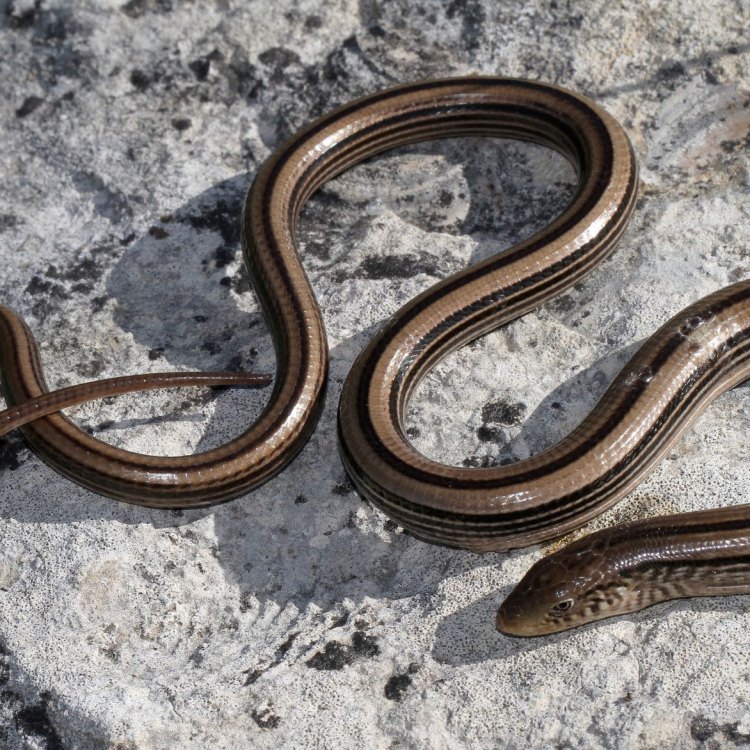
Glass Lizard
- Adult Size: Up to 4.5 feet
- Average Lifespan: 10-15 years
- Reproduction: Oviparous
- Reproductive Behavior: Mating occurs in spring
- Sound or Call: No specific sounds or calls
- Migration Pattern: Non-migratory
- Social Groups: Solitary
- Behavior: Burrowing, basking in the sun
- Threats: Habitat loss, pollution, collection for pet trade
- Conservation Status: Least Concern
- Impact on Ecosystem: Preys on small mammals and insects
- Human Use: Collected for pet trade
- Distinctive Features: Legless, elongated body with a shiny appearance
- Interesting Facts: Can drop and regenerate their tails
- Predator: Birds of prey, snakes
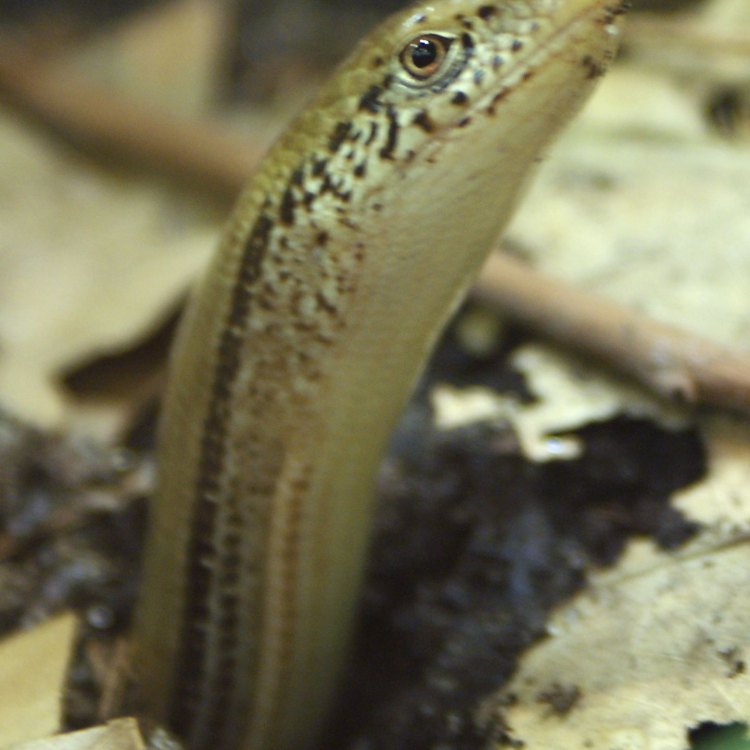
Ophisaurus
The Fascinating World of Glass Lizards: A Closer Look at Their Behavior, Threats, and Unique Features
The world is filled with a diverse array of creatures, each with their own unique features and behaviors. One such creature is the glass lizard, a reptile that often flies under the radar due to its elusive nature. Despite its unusual name, the glass lizard is not a snake but rather a legless lizard, making it a distinct and fascinating creature in its own right.In this article, we will delve into the world of glass lizards, exploring their size, lifespan, behavior, and impact on ecosystems PeaceOfAnimals.Com. We will also discuss the threats they face, their conservation status, and how they are used by humans. By the end of this article, you will have a better understanding of these intriguing reptiles and their place in the natural world.
Size and Lifespan
Glass lizards are slightly misleading in terms of their size as they can grow up to 4.5 feet long, which is quite impressive for a legless lizard. This makes them one of the largest lizards in North America, with the average size ranging from 3 to 4 feet. They have a slender and elongated body that is often mistaken for a snake, but upon closer examination, one can see their small, claw-like front legs.
In terms of their lifespan, glass lizards can live for 10-15 years in captivity, but their lifespan in the wild is unknown. This means that they can potentially live longer than 15 years, making them a long-lived species compared to other reptiles.
Reproduction and Behavior
Glass lizards are oviparous, meaning they lay eggs rather than giving birth to live young Gerberian Shepsky. Mating typically occurs in the spring, and the female lays her eggs in a burrow or under logs. Unlike other reptiles, glass lizards do not exhibit parental care, and the hatchlings are left to fend for themselves.
These elusive creatures are solitary by nature, and they tend to live alone rather than in social groups. They are primarily active during the day, and they can often be found basking in the sun to regulate their body temperature. Glass lizards are also known for their burrowing behavior, and they can create complex underground tunnels for shelter and protection.
Sound and Migration Patterns
Glass lizards do not make any specific sounds or calls, which adds to their mysterious nature. They communicate through body language, such as tail flicking, and releasing pheromones.
Unlike some other species of lizards, glass lizards are non-migratory. They are mainly sedentary and tend to stay in the same area, only moving to find new food sources or during breeding season.
Threats to Glass Lizards
Like many other creatures, glass lizards face numerous threats in their natural habitat. Habitat loss is one of the biggest threats, as urbanization and agriculture continue to encroach on their territory. This is especially concerning as glass lizards prefer open grasslands and meadows, which are often cleared for development.
Pollution is another significant threat to glass lizards, as they are sensitive to changes in their environment. Pesticides, herbicides, and other chemicals used in agriculture can contaminate the water and vegetation, causing harm to these lizards and their prey.
Additionally, glass lizards are often collected for the pet trade, which can have a significant impact on their populations in the wild. It is crucial to note that while some species of glass lizards are bred in captivity, others are taken from the wild, which can disrupt breeding patterns and reduce their numbers in their natural habitat.
Conservation Status and Impact on Ecosystems
Despite the threats they face, glass lizards are currently listed as "least concern" on the IUCN Red List. This means that their population is stable and not in immediate danger of extinction. However, this could change if conservation efforts are not made to protect their habitat and regulate the pet trade.
Glass lizards play a vital role in their ecosystems as they prey on small mammals and insects. This helps to control their populations, making them an essential part of the food chain. They are also preyed upon by birds of prey and other snakes, making them an important source of food for predators.
Human Use
Glass lizards have been used by humans for various purposes, one of which is the pet trade. Due to their unique appearance and relatively docile nature, they have become popular among reptile enthusiasts. While some species are bred in captivity, others are taken from the wild, resulting in a decline in their populations.
Glass lizards are also used in traditional medicine in some cultures. They are believed to have healing properties and are used to treat various conditions. However, this practice has not been scientifically proven, and it has contributed to the decline of glass lizard populations in some areas.
Distinctive Features and Interesting Facts
One of the most distinctive features of glass lizards is their legless, elongated body. They have a shiny appearance, which gives them the appearance of being made of glass, hence their name. Their long and slender bodies enable them to move through narrow spaces and dig through the soil with ease.
One of the most interesting facts about glass lizards is their ability to drop and regenerate their tails. Like many other lizards, glass lizards have a defense mechanism where they can detach their tail when threatened. The tail can then grow back, although it may not be as long or as colorful as the original.
Predators of Glass Lizards
As mentioned earlier, glass lizards face threats from habitat loss and the pet trade, but they also have natural predators in the wild. Their main predators are birds of prey and other snakes, such as rattlesnakes and king snakes. However, adult glass lizards are not easy prey due to their large size and strong body.
The Importance of Protecting Glass Lizards
Glass lizards may seem like elusive and unassuming creatures, but they play a significant role in their ecosystems. As predators of small mammals and insects, they help maintain balance in the food chain, and their burrowing behavior contributes to soil aeration and nutrient cycling.
To ensure that glass lizards continue to thrive in the wild, it is crucial to protect their habitats and regulate the pet trade. This can be achieved through conservation efforts, such as creating protected areas and educating the public about the importance of these creatures in their ecosystems.
In Conclusion
Glass lizards may not be as well-known as other reptiles, but they are a unique and fascinating species in their own right. From their size and behavior to the threats they face, there is much to learn about these elusive creatures. As responsible citizens of the planet, it is our duty to protect and preserve species like glass lizards, not only for their sake but also for the health and balance of our ecosystems. So, let us continue to admire and appreciate the intriguing world of glass lizards.
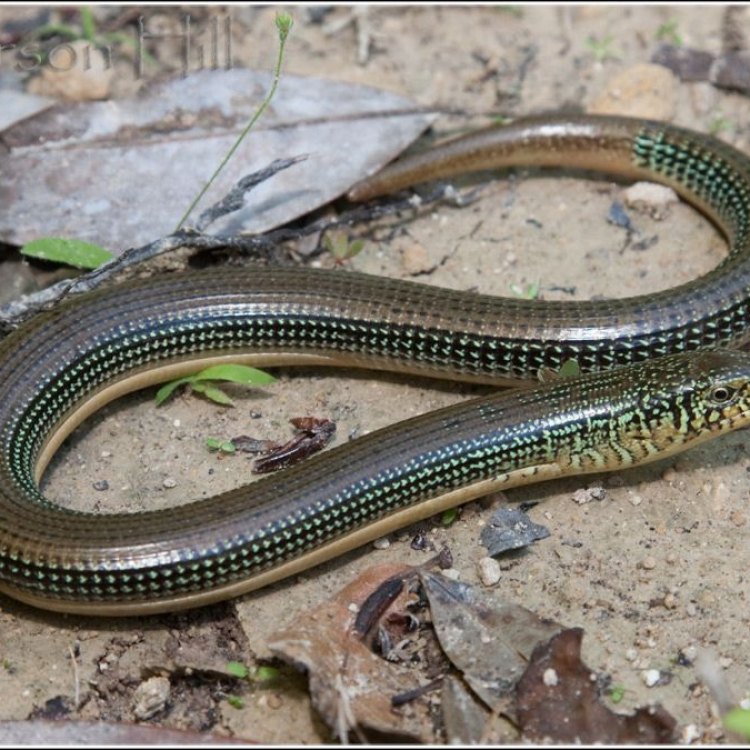
The Unique and Mysterious Glass Lizard – A Close Look at the Slender and Snake-Like Reptile
Disclaimer: The content provided is for informational purposes only. We cannot guarantee the accuracy of the information on this page 100%. All information provided here may change without prior notice.


